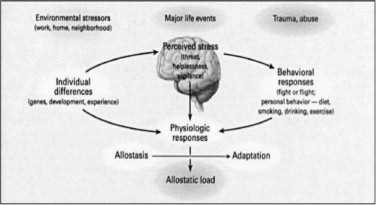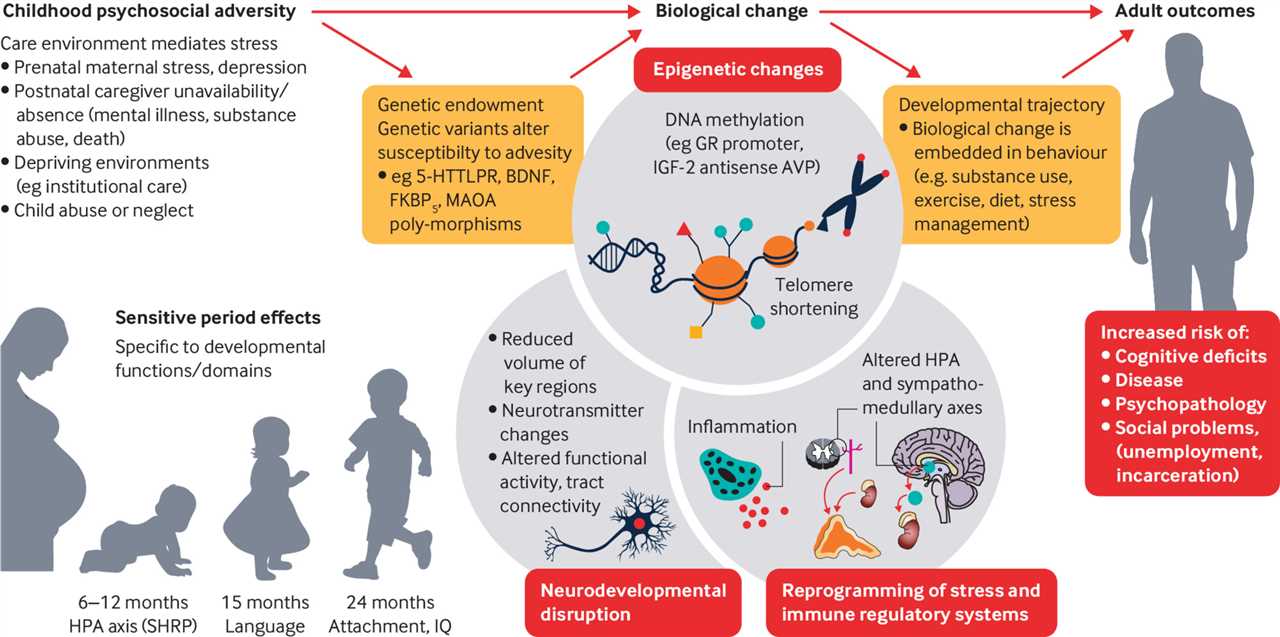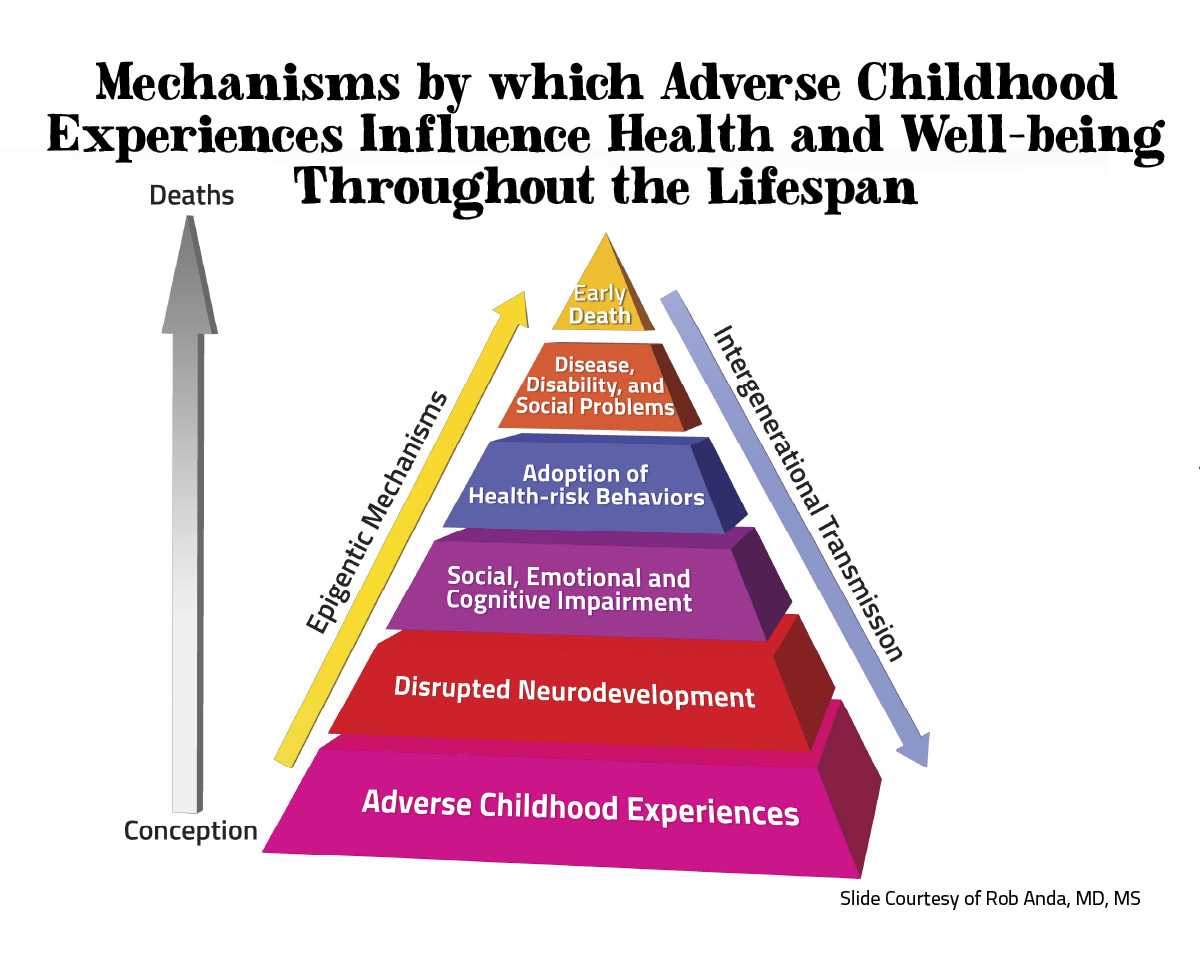
Stress is an inevitable part of life, and its effects on our physical and mental well-being cannot be underestimated. However, not all stress is created equal. There is a type of stress known as toxic stress that can have a profound impact on our health and overall resilience. In order to understand and combat the effects of toxic stress, it is important to first grasp the concept of allostatic load.
Allostatic load refers to the wear and tear on the body and mind caused by chronic exposure to stressors. These stressors can be physical, emotional, or environmental, and they can range from financial difficulties to trauma and abuse. When our bodies are constantly exposed to stress, our natural stress response system becomes overworked and can no longer function properly. This leads to a state of chronic stress, which can have detrimental effects on our physical and mental health.
Building resilience to toxic stress is essential for maintaining our well-being in the face of adversity. Resilience is the ability to bounce back from difficult situations and adapt to new circumstances. It involves developing coping mechanisms, fostering social support networks, and cultivating a positive mindset. By building resilience, we can better navigate the challenges of life and mitigate the impact of toxic stress on our health.
What is Allostatic Load?
Allostatic load refers to the wear and tear that chronic stress can have on the body. When we experience stress, our body goes through a series of physiological changes to help us cope with the situation. This can include an increase in heart rate, blood pressure, and the release of stress hormones like cortisol.
While these responses are necessary in the short term, chronic stress can lead to an accumulation of these physiological changes, which can have negative effects on our health and well-being. This is known as allostatic load.
Allostatic load can manifest in a variety of ways, including physical symptoms like headaches, digestive issues, and chronic pain, as well as mental health issues like anxiety and depression. It can also contribute to the development of chronic diseases such as cardiovascular disease, diabetes, and autoimmune disorders.
Building resilience to stress is important for managing allostatic load. Resilience refers to our ability to bounce back from stressful situations and adapt to new challenges. By developing healthy coping mechanisms, practicing self-care, and seeking support when needed, we can reduce the impact of stress on our bodies and build resilience to allostatic load.
Definition and Explanation


Allostatic load refers to the cumulative wear and tear on the body as a result of chronic exposure to toxic stress. It is a measure of the physiological consequences of prolonged activation of the body’s stress response system.
When faced with stressful situations, the body releases stress hormones like cortisol and adrenaline, which help the body respond to the immediate threat. However, when stress becomes chronic and the body is constantly exposed to high levels of stress hormones, it can lead to a state of allostatic overload.
This constant activation of the stress response system can have detrimental effects on various bodily systems, including the cardiovascular, immune, and nervous systems. Over time, the body’s ability to adapt and recover from stress becomes compromised, leading to a state of allostatic load.
Toxic stress, which can include experiences such as abuse, neglect, or exposure to violence, is particularly detrimental to the body’s stress response system. It can disrupt the normal functioning of the stress response system, leading to an increased risk of developing physical and mental health problems.
Building resilience to toxic stress is crucial in reducing allostatic load. Resilience refers to the ability to adapt and bounce back from adversity. By developing healthy coping mechanisms, building strong support networks, and engaging in self-care practices, individuals can better withstand and recover from the effects of toxic stress, reducing their allostatic load and promoting overall well-being.
Impact on Health
Toxic stress and the resulting allostatic load can have a significant impact on an individual’s health. When exposed to chronic stressors, such as abuse, neglect, or violence, the body’s stress response system becomes dysregulated. This dysregulation can lead to a variety of physical and mental health problems.
Physically, toxic stress can contribute to the development of conditions such as cardiovascular disease, diabetes, and obesity. The constant activation of the body’s stress response system can lead to elevated levels of stress hormones, inflammation, and other physiological changes that can negatively affect the body’s organs and systems.
Mentally, toxic stress can increase the risk of developing mental health disorders such as anxiety, depression, and post-traumatic stress disorder (PTSD). The prolonged exposure to stress can disrupt brain development, particularly in children, leading to difficulties with learning, memory, and emotional regulation.
Furthermore, the impact of toxic stress can extend beyond the individual experiencing it. Research has shown that the effects of toxic stress can be passed down from one generation to the next, as the physiological changes caused by stress can alter gene expression and impact the health of future generations.
Overall, the toxic stress and allostatic load caused by chronic stressors can have a profound impact on an individual’s health, both physically and mentally. Recognizing and addressing these sources of stress is crucial for promoting resilience and well-being.
Factors Contributing to Allostatic Load

Allostatic load refers to the wear and tear on the body caused by chronic stress and toxic experiences. It is a measure of the cumulative biological burden that results from prolonged exposure to stressors. Several factors contribute to the development of allostatic load, including:
1. Psychological Stress: Chronic psychological stress, such as work-related stress, relationship problems, or financial difficulties, can significantly contribute to allostatic load. The constant activation of the stress response system can lead to dysregulation of various physiological processes and increase the overall load on the body.
2. Adverse Childhood Experiences (ACEs): Childhood trauma, neglect, and abuse can have long-lasting effects on an individual’s health and well-being. ACEs can disrupt the development of stress response systems, leading to increased vulnerability to stress and higher allostatic load later in life.
3. Socioeconomic Factors: Socioeconomic status, including income, education, and occupation, plays a crucial role in determining an individual’s exposure to stressors. Lower socioeconomic status is associated with higher levels of chronic stress and toxic environments, leading to increased allostatic load.
4. Lifestyle Factors: Unhealthy lifestyle choices, such as poor nutrition, lack of physical activity, substance abuse, and inadequate sleep, can contribute to allostatic load. These behaviors can disrupt the body’s natural regulatory systems and increase vulnerability to stress-related diseases.
5. Genetic Factors: Genetic predisposition can influence an individual’s resilience to stress and their susceptibility to developing allostatic load. Certain genetic variations can affect the functioning of stress response systems and increase vulnerability to stress-related disorders.
Building Resilience: Despite the factors contributing to allostatic load, it is possible to build resilience and reduce its impact. Developing healthy coping mechanisms, engaging in stress-reducing activities, seeking social support, and adopting a balanced lifestyle can help individuals better manage stress and improve their overall well-being.
Understanding the factors that contribute to allostatic load is essential for promoting resilience and mitigating the negative effects of chronic stress and toxic experiences. By addressing these factors and building resilience, individuals can protect their physical and mental health.
Understanding Toxic Stress
Toxic stress refers to the prolonged exposure to stressors that can have a detrimental impact on an individual’s physical and mental well-being. It is characterized by the excessive activation of the body’s stress response system, which can lead to a range of negative health outcomes.
Resilience, on the other hand, is the ability to adapt and cope with adversity. Building resilience can help individuals better manage and mitigate the effects of toxic stress.
Allostatic load is a term used to describe the cumulative wear and tear on the body caused by chronic stress. When an individual is exposed to high levels of stress for extended periods of time, their body’s stress response system becomes dysregulated, leading to an increased allostatic load.
Toxic stress can have a profound impact on both physical and mental health. It has been linked to a variety of health conditions, including cardiovascular disease, diabetes, depression, and anxiety. Additionally, it can impair cognitive function and hinder the development of healthy coping mechanisms.
Understanding toxic stress is crucial for individuals and communities to address and mitigate its effects. By promoting resilience and implementing strategies to reduce stress, individuals can build protective factors and improve their overall well-being.
| Effects of Toxic Stress | Strategies to Build Resilience |
|---|---|
|
|
By understanding toxic stress and taking proactive steps to build resilience, individuals can better protect themselves from the negative effects of chronic stress. It is important to prioritize self-care and seek support when needed to promote overall well-being.
Definition and Explanation
Toxic stress refers to prolonged exposure to adverse experiences or conditions that can have a detrimental impact on an individual’s physical and mental health. This type of stress can result from various factors, including abuse, neglect, violence, poverty, and discrimination. Allostatic load, on the other hand, is the cumulative wear and tear on the body and brain as a result of chronic exposure to stressors.
Resilience, in the context of toxic stress, refers to an individual’s ability to adapt and bounce back from challenging experiences. It involves the capacity to effectively cope with stress and maintain overall well-being in the face of adversity. Building resilience is crucial for mitigating the negative effects of toxic stress and promoting positive outcomes.
Understanding the definition and concept of toxic stress, allostatic load, and resilience is essential for developing strategies and interventions to support individuals who have experienced toxic stress. By recognizing the impact of these factors, professionals can work towards promoting resilience and reducing the long-term effects of toxic stress on individuals’ health and well-being.
Effects on Mental and Physical Health
Allostatic load refers to the cumulative wear and tear on the body and mind as a result of chronic stress. When individuals are exposed to prolonged stress, their bodies experience a constant state of activation, leading to increased levels of stress hormones such as cortisol. This can have significant effects on both mental and physical health.
Mentally, the effects of allostatic load can manifest in various ways. Individuals may experience increased levels of anxiety, depression, and difficulty concentrating. Chronic stress can also impair memory and cognitive function, making it harder to think clearly and make decisions. Additionally, the constant state of activation can lead to emotional dysregulation, making it challenging to regulate emotions and cope with stressors effectively.
Physically, allostatic load can have severe consequences. Prolonged stress can weaken the immune system, making individuals more susceptible to illnesses and infections. It can also contribute to the development of chronic conditions such as cardiovascular disease, diabetes, and obesity. Allostatic load can disrupt the body’s natural regulatory systems, leading to imbalances in hormones, blood pressure, and metabolism.
Building resilience to toxic stress is crucial in mitigating the effects of allostatic load on mental and physical health. Resilience refers to the ability to adapt and bounce back from adversity, maintaining mental and physical well-being despite challenging circumstances. Resilience can be cultivated through various strategies, including social support, healthy coping mechanisms, and self-care practices such as exercise, mindfulness, and adequate sleep.
In conclusion, the effects of allostatic load on mental and physical health are significant. Chronic stress can lead to a range of mental health issues and contribute to the development of chronic physical conditions. However, by building resilience and implementing healthy coping strategies, individuals can mitigate the negative effects of allostatic load and promote overall well-being.
Causes and Risk Factors
Allostatic load refers to the wear and tear on the body caused by chronic exposure to toxic stress. This type of stress can come from a variety of sources and can have a significant impact on an individual’s overall health and well-being.
One of the primary causes of allostatic load is exposure to chronic stress. This can include ongoing financial difficulties, relationship problems, or work-related stress. When individuals are constantly exposed to these stressors, their bodies go into a state of high alert, releasing stress hormones such as cortisol. Over time, this chronic activation of the stress response system can lead to allostatic load.
Another risk factor for allostatic load is experiencing trauma or adverse childhood experiences (ACEs). ACEs can include physical or emotional abuse, neglect, or household dysfunction. These early life stressors can have long-lasting effects on an individual’s stress response system, increasing their vulnerability to toxic stress and allostatic load later in life.
Other risk factors for allostatic load include social determinants of health, such as poverty, discrimination, and lack of access to healthcare. These factors can contribute to chronic stress and increase an individual’s allostatic load.
It is important to recognize the causes and risk factors of allostatic load in order to develop strategies for building resilience and reducing the impact of toxic stress on individuals and communities. By addressing these underlying factors, we can work towards creating healthier environments and promoting overall well-being.

I am Patrina de Silva, a psychologist and mental health blogger in Sri Lanka. After obtaining psychology degrees from the University of Colombo and Monash University, I returned home to work as a counselor while also starting the popular blog “Pressy but Happy” to provide advice on psychological issues. Over the past decade, my empathetic articles have made my blog a leading mental health resource in the country. In addition to writing, I maintain a private therapy practice, frequently volunteer counseling time, and conduct seminars, driven by my passion for destigmatizing mental illness and educating the public on the mind-body connection. I strive to be an influential voice in my field through my compassionate approach.
